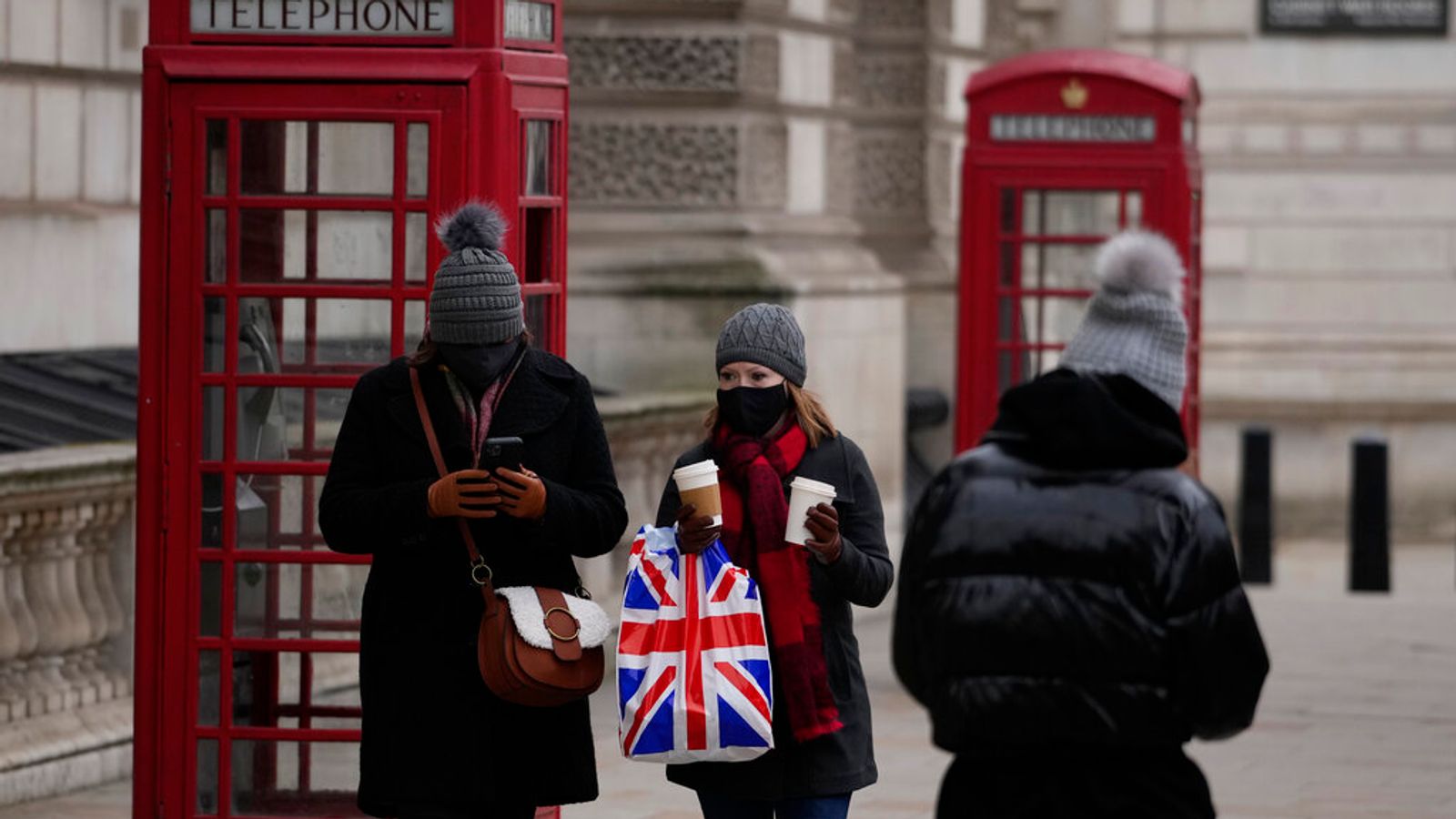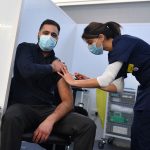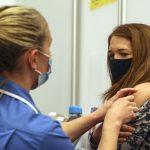The UK has confirmed another 62,399 daily COVID cases and 85 more deaths, latest government figures show.
It’s the lowest number of cases reported since 14 December, when there were 59,610.
The figures compare with the 72,727 infections and 296 deaths that were confirmed yesterday, and 78,317 and 75 reported this time last week.
The latest government data doesn’t include the deaths and cases figures for Northern Ireland because they weren’t provided in time.
The latest UK vaccination figures show a further 52,295 people have had their third jab – bringing the total to 37,263,317.
Another 37,477 have had a second dose, bringing the total to 48,385,074, while a further 17,652 people have had their first jab – bringing the total to 52,331,601.
The latest figures come as vulnerable children aged between five and 11 are now eligible for their first jab.
COVID-19: North Korea set to reopen borders and resume trading with China
England rugby: Eddie Jones says he will find replacements for players unvaccinated against COVID-19
COVID-19: Premier League clubs agree to change coronavirus guidance after controversial postponements
Some 500,000 children who are either most at risk of coronavirus or live with someone vulnerable are now able to get their jabs.
Joseph Aquilina, 45, a neurodiversity consultant from Thames Ditton, celebrated the “lucky” opportunity for his son Xavier, 11.
Xavier, who has benign rolandic epilepsy, said: “It is exciting to be able to be less vulnerable.”
Asked what message he would tell other children about the vaccine, he said: “It is not as stressful as you may think, everyone here is quite nice and you get a sticker at the end.”
On Friday, England’s R reproduction number was reported to have fallen to between 0.7 and 0.9 – compared to 0.8 and 1.1 the week before.
The latest figures from the UK Health Security Agency (UKHSA) mean that every 10 people infected with coronavirus will on average pass the disease to between seven and nine other people.
It comes after researchers discovered lung abnormalities in long COVID patients suffering from breathlessness.
Researchers used the colourless, odourless, tasteless and chemically non-reactive gas xenon to investigate possible lung damage in patients who have not been admitted to hospital but still experience the symptom.
Initial results of the Explain study suggest there is significantly impaired gas transfer in the lungs to the bloodstream in long COVID patients – despite other tests including CT scans coming back normal.






















